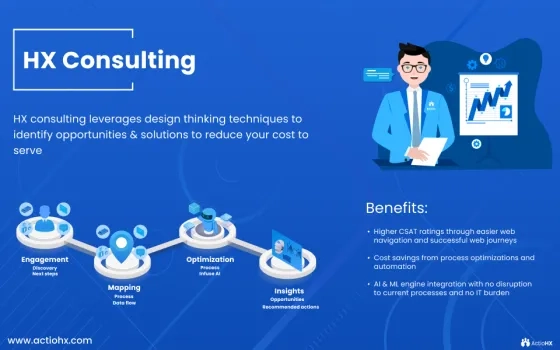Introduction:
In the dynamic world of data analytics, the quest for sharper insights and faster decision-making has never been more intense. As businesses grapple with ever-increasing volumes of data, the traditional methods of data processing and analysis often fall short, unable to keep pace with the demands of real-time analytics. Enter the revolutionary convergence of Artificial Intelligence (AI) and Data Lakehouse.
AI, with its unparalleled ability to sift through vast datasets and identify patterns, has already transformed various aspects of business operations. For instance, it has revolutionized customer interactions and supply chain management.
Meanwhile, the Data Lakehouse, a novel data architecture, promises the best of both data lakes and data warehouses, offering structured and unstructured data processing in one unified platform. Together, AI and Data Lakehouse are poised to redefine the boundaries of what's possible in data analytics, ushering in an era of real-time insights and strategic foresight like never before.
The Current Landscape of Data Analytics
The world of data analytics has witnessed a seismic shift over the past decade. As businesses have become increasingly data-driven, the volume, variety, and velocity of data have skyrocketed. This data deluge, while offering immense potential, also brings forth challenges:
Scalability Issues
Traditional data warehousing solutions, once hailed as the gold standard, now grapple with significant scalability challenges, hindering their ability to process and analyze data in real-time, efficiently.
Data Silos
With data coming from myriad sources - from IoT devices to customer interactions - businesses often find their data trapped in silos. This fragmentation hampers holistic analysis and insights.
Real-time Analysis
In today's fast-paced business environment, historical data analysis falls short of meeting the demands for immediate insights. Companies need real-time analytics to respond swiftly to evolving market dynamics and make informed decisions on the fly.
Complexity and Cost
Setting up and maintaining traditional data infrastructures can be complex and costly, often requiring specialized skills and resources.
These challenges underscore the need for a more agile, scalable, and efficient data analytics solution. A solution that not only addresses the limitations of traditional systems but also harnesses the latest technological advancements, such as AI and Data Lakehouse, to elevate data analytics to new heights.
The Power of AI in Data Analytics
AI enhances data quality and metadata management by automating tasks such as data cleaning and error correction. This automation not only ensures data integrity but also streamlines the process, leading to more reliable insights.
Transformative Data Processing
At the heart of AI's prowess is its ability to process vast amounts of data at unprecedented speeds. Machine learning algorithms, a subset of AI, can sift through datasets, identifying patterns and anomalies that would be impossible for human analysts to discern in a timely manner.
Real-time Insights
With AI, real-time data analysis is not just a possibility; it's a reality. Businesses can now gain instant insights into customer behavior, market trends, and operational efficiencies. This immediacy allows for swift decision-making, giving companies a competitive edge.
Natural Language Processing (NLP)
One of AI's most remarkable capabilities is NLP. It allows systems to understand, interpret, and generate human language. In the context of data analytics, NLP can analyze unstructured data, such as customer reviews or social media posts, providing valuable insights into customer sentiments and preferences.
Predictive Analytics
AI's predictive capabilities are reshaping industries. By analyzing historical data, AI can forecast future trends, from sales spikes to potential system downtimes. Such foresight enables businesses to strategize proactively, optimizing outcomes.
Augmented Data Management
AI enhances data quality and metadata management. It can automate data cleaning, filling in missing values, and correcting errors. This ensures that the data being analyzed is accurate, leading to more reliable insights.
The integration of AI into data analytics signifies a paradigm shift. It's not just about processing more data faster; it's about delving deeper, understanding better, and anticipating the future. As AI continues to evolve, its role in data analytics will only become more pivotal, offering businesses unparalleled opportunities to harness the true power of their data.
Introduction to Data Lakehouse
In the quest for more efficient and comprehensive data analytics, a new paradigm has emerged: the Data Lakehouse. This innovative architecture seeks to combine the best of two worlds: the vast storage capabilities of data lakes and the structured querying power of data warehouses. The combination is advantageous as it allows businesses to store vast amounts of raw data while enabling structured analytics for deeper insights.
What is a Data Lakehouse?
At its core, a Data Lakehouse is a unified data platform. Unlike traditional systems where data lakes and data warehouses operate in silos, the Lakehouse brings them together. It stores vast amounts of raw data, much like a lake, but also allows for structured querying and analytics, akin to a warehouse.
Benefits Over Traditional Systems
One of the primary advantages of a Data Lakehouse is its flexibility. It can handle both structured and unstructured data, making it ideal for today's diverse data sources. Moreover, with the incorporation of modern data frameworks and tools, Lakehouses offer improved performance, especially for complex queries that may require combined analysis of structured and unstructured data at the same time.. For instance, the system can handle intricate queries related to customer behavior patterns more efficiently.
Breaking Down Silos
The Data Lakehouse effectively eliminates data silos. By centralizing data storage and analytics, businesses can gain a holistic view of their operations. This unified perspective is crucial for deriving actionable insights and fostering data-driven decision-making.
Scalability and Efficiency
Built on cloud-native architectures, Data Lakehouses are inherently scalable. They can easily accommodate growing data volumes, ensuring that businesses remain agile and responsive to changing data needs.
The emergence of the Data Lakehouse represents a significant leap forward in the realm of data analytics. As businesses grapple with ever-increasing data complexities, the Lakehouse offers a streamlined, efficient, and scalable solution, setting the stage for the next era of data innovation.
AI and Data Lakehouse: A Synergistic Relationship
Within the Data Lakehouse framework, AI's capabilities truly shine. For example, AI algorithms can swiftly parse through vast reservoirs of structured and unstructured data, uncovering intricate patterns, correlations, and insights that might otherwise remain obscured.
Automation and Augmented Data Management
The centralized nature of the Data Lakehouse, combined with AI-driven automation, revolutionizes data management. Routine tasks, from data cleaning to categorization, are seamlessly automated, ensuring data integrity and freeing up valuable resources for strategic data initiatives.
Predictive Analytics within the Lakehouse
The melding of AI with the Data Lakehouse takes predictive analytics to a new dimension. By analyzing historical data of all sorts within the Lakehouse, AI can generate accurate forecasts, from sales projections to customer behavior patterns. This proactive approach empowers businesses to anticipate challenges and seize opportunities.
Real-time Data Processing and Analysis
The synergy between the Data Lakehouse's efficient storage mechanisms and AI's rapid data processing results in real-time analytics. Businesses no longer have to wait for insights; they can make data-driven decisions in the moment, adapting to changing scenarios.
Enhanced Security and Compliance
Beyond analytics, AI plays a pivotal role in bolstering the Data Lakehouse's security. Continuous monitoring, anomaly detection, and real-time alerts ensure that data remains protected against potential breaches. This proactive security stance is crucial in today's complex threat landscape.
Scalability and Future-Proofing
As businesses grow, so do their data needs. The combination of AI and Data Lakehouse ensures scalability. Whether it's accommodating new data sources or integrating advanced AI models, the system is built to evolve, ensuring businesses remain at the forefront of data innovation.
Future Prospects of AI-Driven Data Lakehouse
The fusion of AI and Data Lakehouse is just the beginning of a transformative journey in data analytics. As AI models become more sophisticated and Lakehouse architectures evolve, businesses can anticipate even deeper insights, more robust security, and seamless scalability. The horizon promises unparalleled data innovation, setting new benchmarks for analytics excellence.
Conclusion
The combination of Artificial Intelligence and the Data Lakehouse represents a significant advancement in data analytics. In a world inundated with data, having a robust and efficient analytics solution with an amalgamated view of both structured and unstructured data is essential. The AI-driven Data Lakehouse meets this need, offering real-time insights and predictive capabilities that were previously out of reach. This integrated approach is not just a smart move; it's a necessity for sustained growth and success as technology continues to evolve, shaping the future of data analytics.





























